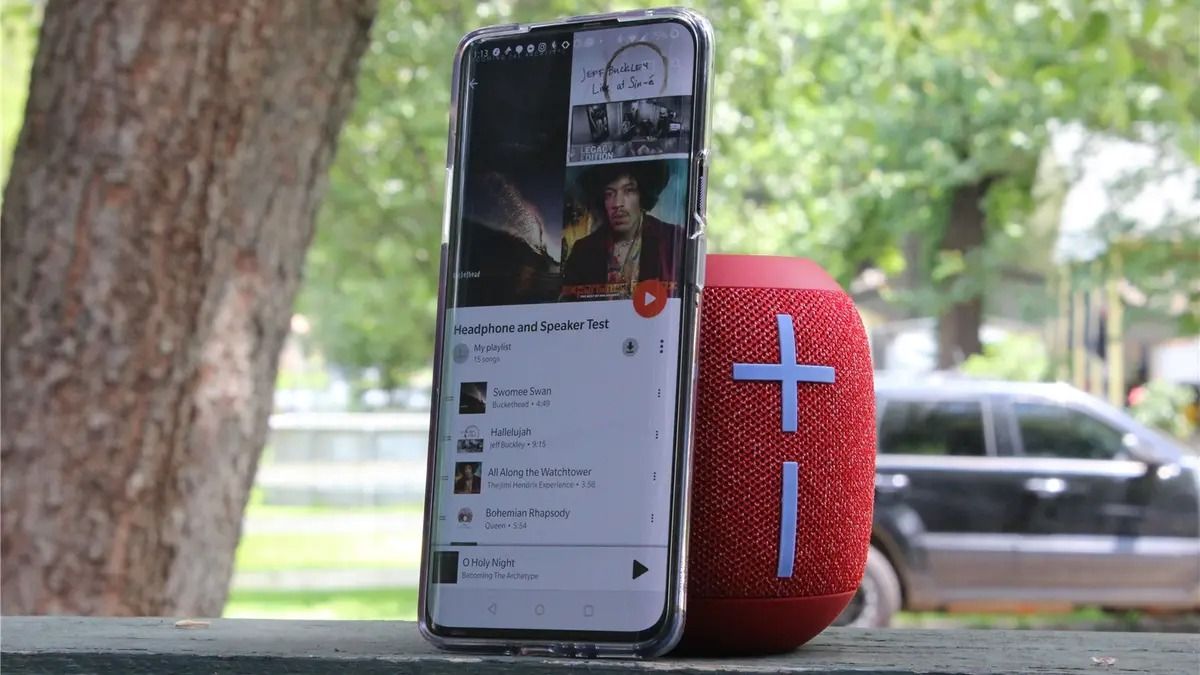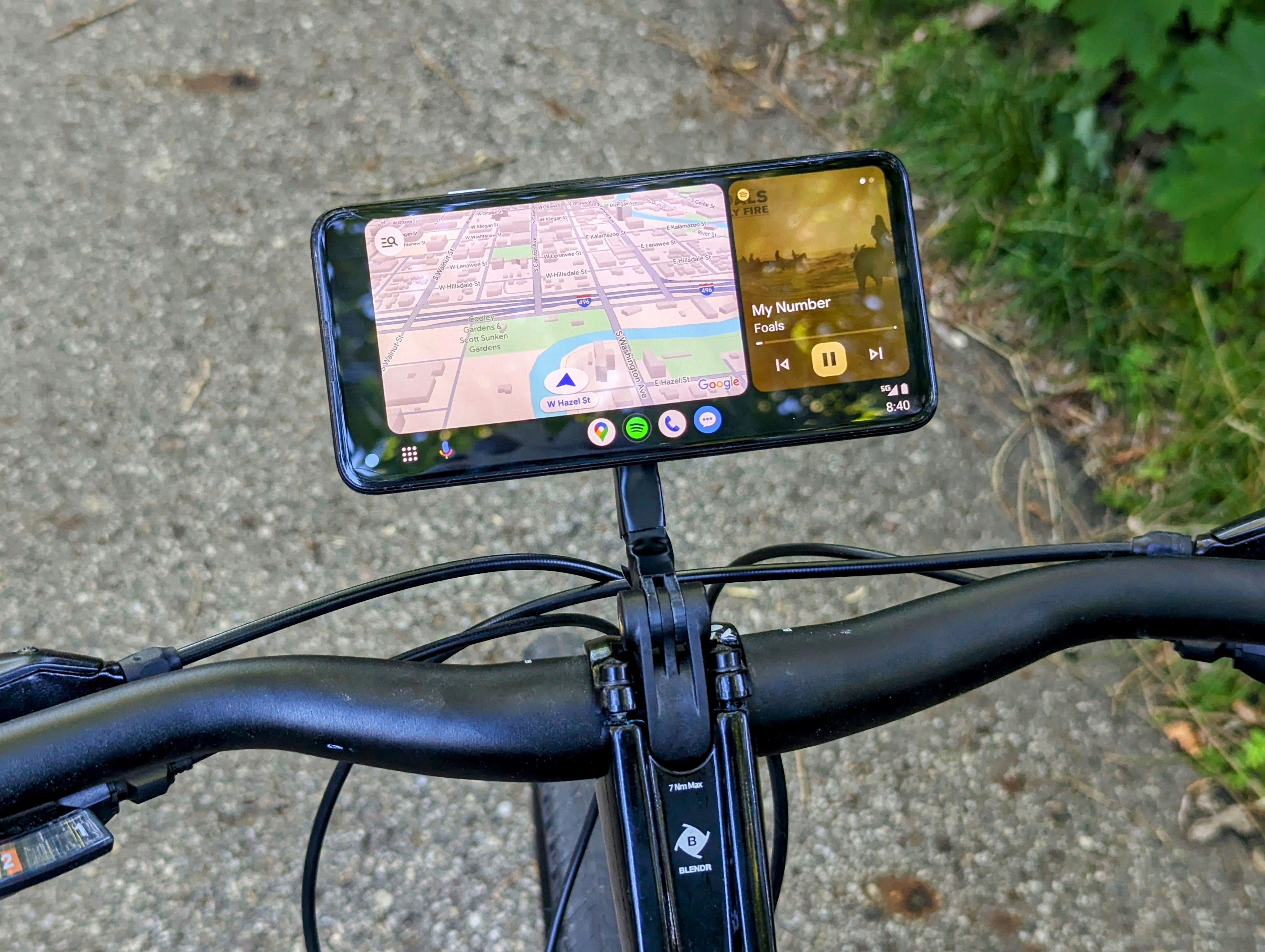
Evaluating the Impact of Smartphone Screen Brightness on Outdoor Usage

Evaluating the Impact of Smartphone Screen Brightness on Outdoor Usage
Quick Links
- Do You Have Enough Nits?
- Well, We Do Need to Work Outdoors
- Enjoy Your Phone While Touching Grass
- We Take Our Phones Out Hiking, Running, and Biking
- Sometimes It’s Too Bright Indoors, Too
- A Screen You Can’t See Is Useless
Key Takeaways
- Bright screens are crucial for outdoor visibility and usability.
- Nits measure screen brightness, with higher numbers indicating better outdoor readability.
- Bright screens and e-ink displays help with using your phone to read, watch video, work, and exercise outdoors.
When you’re buying a new phone, you may hear mention of how bright the screen gets, but is this really all that important?
When you take your phone outside, how readable it is in sunlight becomes the single most important thing about it. That means, for some of us, the answer is obvious.
Do You Have Enough Nits?
For the vast majority of smartphones packing a backlit screen, how readable a phone is in sunlight depends on how bright the screen can get. Since companies like relaying information in numbers, this number is called a “nit.” A screen with 100 nits isn’t that bright. A screen with 2,000 nits is. Most phones are somewhere in between.
The Nexus 5 from 2013 manages around 400 nits. A Pixel 8 in 2023 can handle 1,400 nits. An iPhone 15 maxes out at 2,000 nits outdoors. The Galaxy S24 goes up to 2,600.
This is one area where we see big improvement in each generation of devices. This year’s phone is brighter than last year’s. The same is true of tablets. There’s a lot of effort going into making sure our screens are more legible outside, but is this really a good use of our phones’ battery?
Well, We Do Need to Work Outdoors
I’m writing this article on a phone, since I’ve replaced my PC with a foldable phone and Samsung DeX . Since my Galaxy Z Fold 5 has a bright screen, I’m able to do some of that writing while outside. But I’m in the minority with this type of workflow. Most people do this type of work on a traditional PC!
Phones are most often vital for work in other ways. Take package delivery. Someone drops off a package at your door, takes a picture, and fiddles with an app. If they can’t make out what’s on the screen, they’re less able to do their job.
I like to shop at our local farmers market. Once upon a time, this meant having to bring cash. Now I take it as a given that a vendor accepts cards. Why? Because they have a phone and a Square card reader. How well this works depends on whether they can see their screen. They hneed to see to enter the correct price they’re charging me. I have to be able to see what’s on-screen in order to sign my signature. In this case, poor sunlight visibility is bad for business.
A construction worker may have to find a shady place to see who is trying to reach them when they get a call. Someone directing traffic for roadwork may not be able to walk off at all, having to settle for placing their hand over the screen and squinting. Outside picking fruit off a tree? I don’t need to explain the benefits of a bright screen to you. You already know.
Enjoy Your Phone While Touching Grass

Cameron Summerson / How-To Geek
It’s not for everyone, but I love reading ebooks and comics on my phone . That’s one of the perks of having a phone with a large folding display. I like taking these digital books and comics with me outside to read while I’m sitting on the grass or on a park bench. My phone’s screen is bright enough that even on a sunny summer day, I can usually read just fine.
On older phones, this is not really an option. The screen isn’t pushing enough light to overcome the reflections and glare. This is one reason many opt to buy a dedicated eReader like a Kindle or a Nook. E-ink is as readable outside as a paperback book.
Sunlight readability is one of the reasons I’d love to see a smartphone with an e-ink screen come to the US. As great as having a bright screen is, e-ink is more readable outdoors without putting nearly as much of an impact on your battery.
We Take Our Phones Out Hiking, Running, and Biking

Joe Fedewa / How-To Geek
We say we need to put down our screens and hit the outdoors, but even when we’re out and about, our phones still augment what we’re doing. AllTrails serves as a map when we’re hiking a small corner of the world we’ve never trekked before. Strava shows how far we’ve run. If you can barely see what’s on the screen, the effort to try to make it out actually results in spending more time looking at your phone, not less.
Like with any of these activities, if you’re turning an old phone into an Android Auto display for your ebike , you need the screen to be legible. There are so many ways to make use of an Android device outside, but if the screen is too dim, that limits your imagination to what can be done indoors.
Sometimes It’s Too Bright Indoors, Too
Sometimes when I’m writing in a library, the only open seat is one right next to a window. A bright screen is what determines whether I can work at the one available desk absorbing glare from the sun or have to make the walk back out to my car. Back when I daily drove a Boox Tab Ultra as my main PC, faced with this situation, I could make myself comfortable at an outdoor table or bench instead. It’s nice to have options.
As more of us rely on our phones, we need to remove these pain points. Maybe you’re on stage under bright lighting, trying to read your speech. It would be a shame for a dim screen to be the reason you went viral for giving an absolutely abysmal performance. At this point, you can give less thought to whether a new phone runs iOS or Android and more to whether it is bright enough.
A Screen You Can’t See Is Useless
By this point, you get the idea. You might think that these are minor nitpicks. In some cases, sure, you can change your expectations and be fine. But the world is changing around us.
I drive an electric car, and some charging networks only work via a smartphone app. As someone who has spent years using a Light Phone 2 instead of a smartphone, I know how big an issue this can be. But even with a smartphone, it sucks standing under a hot beaming sun trying to activate a new app for the first time when you can barely make out what you’re doing. Your partner’s in the car wondering what is taking so long. The kids are complaining. It’s a mess.
Having fewer gigs of RAM or a slow processor may mean you encounter more stuttering or an app is more likely to crash, but it rarely ever makes your phone unusable. A dim screen means there are certain places where you simply cannot use your phone. We may have gotten by well enough with screens that are a bit dim, but that doesn’t mean a bright screen is just a nice-to-have. It’s one of the newer innovations that actually makes our phones better at being phones and everything else they do.
Also read:
- [New] In 2024, Top Eight Video Recording Apps
- [New] Video Platform Review Is Vimeo Best Over YouTubes and DailyMotions, In 2024
- [Updated] 2024 Approved Flex Your Viewing Muscles Handling Multiple YouTube Videos
- Behind the See-Through Screen: A Deep Dive Into Lenovo's Functional Transparent Laptop Showcase at MWC
- Canva's Hidden Power-Ups for Stunning Visuals for 2024
- Demystifying Bass Management in Audio Systems for Optimal Clarity and Power
- Effective Onboarding Strategies: Harmonizing Client Trust and Anti-Fraud Measures
- Explore the Year's Finest Tech Marvels: Leading Gizmos and Tools of 2E23 Spotlighted by ZDNet
- HP Shakes Up Laptop Industry with Innovative Approach that Even Apple Can't Match | Expert Analysis
- In 2024, Can You Unlock iPhone SE After Forgetting the Passcode? | Dr.fone
- In 2024, Edit and Send Fake Location on Telegram For your Samsung Galaxy A23 5G in 3 Ways | Dr.fone
- In 2024, Top Picks Browsers Excelling at Digital Visualization
- Restoring Default Sound Configuration on Windows: A Step-by-Step Guide
- Seamless Upgrades: Enabling Vintage DVD Playback on the Latest Apple M-Series Mac Computers
- The Ultimate List of Exclusive Black Friday-Like Discounts on Video Games for Oct '24 - AZNET Guide
- Title: Evaluating the Impact of Smartphone Screen Brightness on Outdoor Usage
- Author: Richard
- Created at : 2024-12-03 16:15:22
- Updated at : 2024-12-07 01:59:51
- Link: https://hardware-updates.techidaily.com/evaluating-the-impact-of-smartphone-screen-brightness-on-outdoor-usage/
- License: This work is licensed under CC BY-NC-SA 4.0.